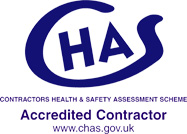Asbestos Frequently Asked Questions
A quick reference guide to working with asbestos
Click on the question to reveal the answer.
Asbestos is responsible for over 5000 deaths every year. Younger people, if routinely exposed to asbestos fibres over time, are at greater risk of developing asbestos related disease than older workers. This is due to the time it takes for the body to develop symptoms after exposure to asbestos. Exposure to asbestos can cause four main diseases:
- Mesothelioma - a cancer of the lining of the lungs; it is always fatal and is almost exclusively caused by exposure to asbestos.
- Asbestos - related lung cancer, which is almost always fatal.
- Asbestosis - a scarring of the lungs which is not always fatal but can be a very debilitating disease, greatly affecting quality of life.
- Diffuse pleural thickening - a thickening of the membrane surrounding the lungs which can restrict lung expansion leading to breathlessness.
You can get further detailed information on these diseases from the Health and Safety Executive website.
It can take anywhere between 15 to 60 years for any symptoms to develop after exposure, so these diseases will not affect you immediately but may do later in life. You need to start protecting yourself against any exposure to asbestos now because the effect is cumulative.
Asbestos was a widely used material within commercial buildings, homes and machinery until 1999, when it was banned. This means that asbestos is common in the general environment. However, working directly with asbestos containing materials (ACMs) can give personal exposures to airborne asbestos that are much higher than normal environmental levels. Repeated occupational exposures can give rise to a substantial cumulative exposure over time. This will increase the risk of developing an asbestos related disease in the future.
The majority of the current fatal cases from asbestos exposure, approximately 4000 deaths per year are associated with very high exposures from past industrial processes and installation of asbestos products.
It can be difficult to identify asbestos, as it is often mixed with other materials. The Health and Safety Executive asbestos image gallery on their website shows a number of common materials that contain asbestos.
You should stop work immediately, confirm what it is or assume it is asbestos and carry out a risk assessment. This will help determine if the work requires a licensed contractor. You should only carry out non licensed work on asbestos if you have had the appropriate information, instruction and training.
Yes, if an employee is liable to be exposed to asbestos, then employers should provide that employee with adequate personal protective clothing appropriate for the work that they will be doing. The Health and Safety Executive Asbestos essentials sheet on PPE which is available on their website provides further information.
There is no legal requirement to hold a certificate as proof of training, however, many training providers issue a certificate to indicate completion of a training course.
There are a number of practical publications on asbestos available for free download on the Health and Safety Executive website.
Yes, A risk assessment must be carried out before any work on asbestos begins.
Most work on asbestos cement can be carried out without a licence providing workers have had appropriate information, instruction and training. The Health and Safety Executive Asbestos essentials series on their website provides further information.
Firstly you should check which enforcing authority you need to contact. If the enforcing authority is the Health and Safety Executive you can report your concern using their online form or by calling their Concerns team on 0300 003 1647 during office hours 8.30am - 5.00pm Monday - Friday, Thursday 10.00am to 5.00pm.
Refresher training for licensable and non-licensable work should be given every year. This should be based on a training needs analysis. For awareness training, there is no need to repeat a full training course every year, however some suitable refresher should be given. This can be given as part of other health and safety updates.
You can apply to renew your licence via the Licence application pages on the Health and Safety Executive website.
Short duration within these regulations means any one person working for less than one hour, or more than one person working for a total of less than two hours in any seven consecutive days.
All analysts for asbestos related work must be accredited by UKAS and so they are all listed on the UKAS web site
The duty to manage asbestos is a legal requirement under the Control of Asbestos Regulations 2012 (Regulation 4). It applies to the owners and occupiers of commercial premises (such as shops, offices, industrial units etc) who have responsibility for maintenance and repair activities. In addition to these responsibilities, they also have a duty to assess the presence and condition of any asbestos containing materials. If asbestos is present, or is presumed to be present, then it must be managed appropriately. The duty also applies to the shared parts of some domestic premises.
Comprehensive advice on the duty to manage asbestos, including a step-by-step guide to help you manage asbestos in your buildings is available online.
An asbestos survey is an effective way to help you manage asbestos in your premises by providing accurate information about the location, amount and type of any asbestos-containing materials (ACMs). While not a legal requirement, it is recommended that you arrange a survey if you suspect there are ACMs in your premises. Alternatively, you may choose to presume there is asbestos in your premises and would then need to take all appropriate precautions for any work that takes place. However, it is good practice to have an asbestos survey carried out so you can be absolutely sure whether asbestos is present or not.
The asbestos survey can help to provide enough information so that an asbestos register, a risk assessment and a management plan can then be prepared. The survey will usually involve sampling and analysis to determine the presence of asbestos so asbestos surveys should only be carried out by competent surveyors who can clearly demonstrate they have the necessary skills, experience and qualifications.
An asbestos survey will identify:
- the location of any asbestos containing materials in the building,
- the type of asbestos they contain,
- the condition these materials are in.
Following a survey, the surveyor should produce a survey report which details the findings. This information can help you prepare an asbestos risk register.
The asbestos risk register is a key component of the required plan on how you will manage any asbestos found, or presumed to be, in your buildings. This management plan must contain current information about the presence and condition of any asbestos in the building. The asbestos risk register will therefore need to be updated on a regular basis, at least once a year. To do this you should make:
- regular inspections to check the current condition of asbestos materials,
- deletions to the register when any asbestos is removed,
- additions to the register when new areas are surveyed and asbestos is located,
- changes to the register at any time asbestos-containing materials are found to have deteriorated.
The risk register can be kept as a paper or electronic record and it is very important that this is kept up to date and easily accessible. Paper copies may be easier to pass on to visiting maintenance workers, who will need them to know the location and condition of any asbestos before they start work. Electronic copies are easier to update and are probably better suited for people responsible for large numbers of properties or bigger premises.
The control limit refers to the concentration of asbestos fibres in any localised atmosphere, measured and averaged over a continuous period of four hours, in accordance with the 1997 World Health Organisation's recommended method. At the moment, the control limit is 0.1 asbestos fibres per cubic centimetre of air (0.1 f/cm3). The control limit is not a 'safe' level and work activities involving asbestos should be designed to be as far below the control limit as possible. The Health and Safety Executive has progressively tightened the control limit since 1987.
Work involving some lower risk asbestos-containing materials, such as asbestos cement products and textured decorative coatings, among others, can be carried out if a risk assessment demonstrates that the control limit will not be exceeded and that any exposure to asbestos is expected to be 'sporadic and of low intensity'. The control limit for this type of non licensed work is 0.6 asbestos fibres per cubic centimetre of air (0.6 f/cm3), measured over a ten-minute period. Any work which is likely to result in exposures at or above this level cannot be considered to be sporadic and of low intensity and should therefore only be carried out by a licensed contractor.
Work with particular asbestos containing materials can only be carried out by somebody who holds a licence issued by Health and Safety Executive. Licences are granted for a limited period of time usually one or three years, enabling the Health and Safety Executive to review licences and the performance of licence holders at regular intervals.
Not all work with asbestos materials requires a licence. However, all work with sprayed asbestos coatings, asbestos insulation or asbestos lagging and most work with asbestos insulating board (AIB) requires a licence because of the hazardous nature of these higher risk materials. For information on when you might require a licence and the application process.
For those doing licensed work, the current Regulations require that employers must keep a health record for employees and they must also be kept under regular medical surveillance. The health record must be kept for 40 years after the date of the last entry in it. If an employee has been exposed to asbestos, the health record must note the following:
- the date, time and how long the exposure to asbestos was for,
- the type of asbestos, if known,
- the levels of asbestos exposed to, if known.
The removal of higher risk asbestos containing materials, such as sprayed asbestos coatings, asbestos insulation, asbestos lagging and most work involving asbestos insulating board (AIB) should only be carried out by a licensed contractor.
Licensed asbestos removal work is a significantly hazardous job because it involves higher risk asbestos containing materials (ACMs). These materials are more likely to release larger quantities of asbestos fibres when being removed than lower risk materials, such as asbestos cement. As a result, workers who are employed in removing higher risk ACMs require specific training and should follow specific working practices. Workers should also use sophisticated respiratory protective equipment (RPE) and are legally required to be under regular medical surveillance. It is because of the hazardous nature of this work that a licence to do it is required from the Health and Safety Executive. You can find further information on the HSE licensing process on the Asbestos licensing page of their website.
There are some asbestos removal tasks, involving lower risk asbestos containing materials that do not require a licence. This is because any exposure to asbestos fibres from this type of work is not expected to present a significant risk, provided that the correct precautions are taken. However, under the asbestos regulations that came into force in April 2012, there are now two categories of non licensed work, one of which, notifiable non licensed work (NNLW), has additional requirements for employers. For more information on what work is classified as NNLW. Check out the Health and Safety Executive website as they have produced a series of task sheets on the appropriate controls for non-licensed work.
An up to date list of licensed contractors including the type of licence held is available on the Health and Safety Executive website on their asbestos licensing information community page.
The current Regulations place a legal duty on employers to provide information, instruction and training to any of their employees who are likely to be exposed to asbestos as part of their work.
The three main types of information, instruction and training are:
- asbestos awareness training,
- training for non licensable asbestos work, such as the type of work described in Health and Safety Executives Asbestos essentials
- training for licensable asbestos work.
People who believe they may have been exposed to asbestos are understandably anxious and concerned about the possible effects on their health. Many cases of inadvertent, short term exposure to asbestos will most likely have led to minimal exposure to fibres, with little likelihood of any long term ill health effects.
Although the type of asbestos involved and duration of exposure may be known, there may be little reliable information about the level of exposure. These are all important factors in determining the level of risk. The more fibres that are released by an asbestos containing material, and the longer the work activity lasts, the greater the cumulative exposure to asbestos fibres and, therefore, an increased risk of ill health effects.
Some work activities are more likely to create a significant concentration of asbestos fibres in the air, and therefore, add to the risk if suitable precautions are not in place, such as:
- use of power tools to drill, cut etc on most ACMs,
- work that leads to physical disturbance, such as knocking, breaking, smashing of an ACM that should only be handled by a licensed contractor eg sprayed coating, lagging, asbestos insulating board (AIB),
- manually cutting or drilling AIB,
- work involving aggressive physical disturbance of asbestos cement eg breaking or smashing.
Some asbestos containing materials release fibres more easily than others. For detailed information on types of asbestos containing material and the likelihood of fibre release.
If you are concerned about possible exposure to asbestos from work activities, you are advised to consult your GP and ask for a note to be made in your personal record about possible exposure, including date(s), duration, type of asbestos and likely exposure levels (if known). In some circumstances, your GP may refer you to a specialist in respiratory medicine. The Health and Safety Executive does not advocate routine X-rays for people who have had an inadvertent exposure to asbestos. Asbestos related damage to the lungs takes years to develop and become visible on chest X-rays. X-ray examinations cannot indicate whether or not asbestos fibres have been inhaled.
The Reporting of Injuries, Diseases and Dangerous Occurrences Regulations 2013 (RIDDOR) places duties on employers, the self-employed and people in control of work premises (the responsible person) to report certain serious workplace accidents, occupational diseases and specified dangerous occurrences (near misses).
Exposure to asbestos is reportable under RIDDOR when a work activity causes the accidental release or escape of asbestos fibres into the air in a quantity sufficient to cause damage to the health of any person. Such situations are likely to arise when work is carried out without suitable controls, or where those controls fail – they often involve:
- use of power tools (to drill, cut etc) on most ACMs,
- work that leads to physical disturbance (knocking, breaking, smashing) of an ACM that should only be handled by a licensed contractor eg sprayed coating, lagging, asbestos insulating board (AIB),
- manually cutting or drilling AIB,
- work involving aggressive physical disturbance of asbestos cement eg breaking or smashing.
If these activities are carried out without suitable controls, or the precautions fail to control exposure, these would be classed as a dangerous occurrence under RIDDOR and should be reported.
Remember, if you need to report a dangerous occurrence relating to asbestos, you should review your asbestos management plan or your working practices. Further advice on managing and working with asbestos.
Asbestos waste describes any asbestos products or materials that are ready to be disposed. This includes any contaminated building materials, dust, rubble, used tools that cannot be decontaminated, disposable PPE (personal protective equipment) and damp rags that have been used for cleaning. Asbestos waste must be placed in suitable packaging to prevent any fibres being released. This should be double wrapped and appropriately labelled. Standard practice is to use a red inner bag – marked up with asbestos warning labels – and a clear outer bag with appropriate hazard markings. Intact asbestos cement sheets and textured coatings that are firmly attached to a board should not be broken up into smaller pieces. These should instead be carefully double wrapped in suitable polythene sheeting (1000 gauge) and labelled.
Asbestos waste should only be handled by a licensed disposal site. Your local authority link to external website can provide details of these for you . It also needs to be transported to these sites in suitable containers that prevent the release of any asbestos fibres while in transit.
Control of Asbestos Regulations (2012)
The Control of Asbestos Regulations 2012 came into force on 6 April 2012, updating previous asbestos regulations to take account of the European Commission's view that the UK had not fully implemented the EU Directive on exposure to asbestos (Directive 2009/148/EC).
In practice the changes are fairly limited. They mean that some types of non licensed work with asbestos now have additional requirements – notification of work, medical surveillance and record keeping. All other requirements remain unchanged.
Notifiable non licensed work (NNLW) is a particular category of non licensed work that imposes extra requirements on employers.
For NNLW, employers also have additional requirements to:
- notify work with asbestos to the relevant enforcing authority,
- designate (identify) areas where the work is being done,
- ensure medical examinations are carried out,
- maintain registers of work (health records).
All AIB work that is not short duration work requires a licence. Short duration work is when work with these materials will take no more than two hours in any seven day period, and no one person works for more than one hour in that two hour period. Work with AIB that is short duration but is still likely to release a high level of asbestos fibres is also licensed.
Assessing the risks from work with AIB will often require a degree of judgement. AIB sits in the mid-range of the spectrum of friability on disturbance so it is reasonably likely to release asbestos fibres when it is worked on (high friability means very likely to release many fibres, low friability means less likely to release significant numbers of fibres).
Therefore, you need to decide what form and condition the AIB is in and how well it is bonded within a matrix, eg how well the AIB is coated, covered or contained within another material, such as paint or other covering, and the nature and extent of the work you need to do, as this will affect the level of controls you need in place to do the work.
Licensed work with AIB:
- work on AIB in poor condition, eg exposed and crumbling or with loose dust/fibres; de-laminated, unsealed or damaged in some other way,
- maintenance work with AIB that is not short and non-continuous,
- major removal of AIB.
Notifiable non-licensed work with AIB:
- minor removal work involving AIB, when short duration and as part of a refurbishment project, eg removing AIB panels fixed with screws following water damage
- entry into the roof space above an AIB tiled ceiling, when no decontamination or cleaning has taken place
The removal of nailed AIB panels poses a problem in that breakage of AIB due to a bent or difficult nail is more likely and may lead to substantial local fibre release and breakage. Sheet A4 of Asbestos Essentials describes unlicensed removal of a single AIB board (less than 1m2 in area) but this requires an enclosure if the panel is nailed. Therefore in this situation, where a panel is nailed and so an enclosure is necessary, this must be treated as notifiable non licensed work. If several panels need removing, eg more than 2 small panels a week; this would need a licensed contractor. If an AIB panel is very heavily nailed, a competent persons judgement, using Asbestos Essentials work sheet A4 as a guide, should decide that a licensed contractor is needed to do the work.
AIB ceiling tiles that are unfixed and loose laid in a false ceiling (where the ceilings upper surface has not yet been competently cleaned of loose fibre - normally by a licensed contractor) can be lifted for inspection purposes without needing a licence or notification. However, full body entry to an uncleaned space above AIB tiles is notifiable non licensed work as a minimum.
To determine whether the work you are doing is classified as notifiable non-licensed work (NNLW), check the NNLW information.
Once you have confirmed the work is NNLW, you need to notify it to the relevant enforcing authority. Do this online, via a computer or Smartphone, at the online notifications form. All three possible enforcing authorities can be notified via this route. This is the only method of notification - you can't notify by phone or post;
Notice should be given before the work starts - there is no minimum notice period. You do not need to wait for permission to permission from the enforcing authority - the database will provide a PDF copy of your notification. If you are a licensed asbestos contractor carrying out NNLW work, you will still need to notify.
There are potentially large numbers of workers, including self employed trades people, involved in notifiable non-licensed work (NNLW) with asbestos, who will now be required to have medical surveillance for the first time. At present, however, there is only a small and limited network of Doctors, who are familiar with asbestos and asbestos-related medicals. The transition period is designed to allow the development of a larger network.
After April 2015, if a job is NNLW, it must be done by persons who have had a medical examination inline with the requirements in the law. This consists of a chest examination and a test to check lung performance. These medical examinations may be offered privately for a fee by GPs and by other medical professionals including Drs appointed by HSE for the licensed workers medical examinations.
The existing requirements for workers involved in licensed work with asbestos to have medicals, conducted by Doctors appointed by the Health and Safety Executive, remain the same.
A licensed worker medical will be acceptable for NNLW, but not the other way round. Certificates of examination should be retained in case requested.
The Health and Safety Executive would expect employers to take a commonsense approach, so if the work was genuinely a one off, or a very rare occurrence, then it would be disproportionate to require a medical. However, the worker would still need to take all the appropriate precautions and the employer should also be able to provide some evidence that it was a one off.
Members of the Public
The general duties in Section 3(1) of the Health and Safety at Work etc Act 1974 (HSW Act) apply to protect householders from any risks from work activities being carried out in their homes. Where work being done involves asbestos containing materials then the Control of Asbestos Regulations 2012 will also apply, in particular:
- regulation 11 (Prevention or reduction of exposure to asbestos),
- regulation 15 (Arrangements to deal with accidents, incidents and emergencies),
- regulation 16 (Duty to prevent or reduce the spread of asbestos.
In owner occupied domestic properties, the owners are not legally responsible for risks to contractors from asbestos, as the owners themselves are not engaged in any work activity.
Asbestos may be part of any commercial or domestic building which was built or refurbished before the year 2000. Asbestos can typically still be found in any of the following:
- asbestos cement products (pipes, flues, roofs etc),
- lagging (on pipes and boilers etc),
- water tanks and toilet cisterns,
- asbestos insulating board (AIB – which closely resembles typical plasterboard),
- loose asbestos in ceiling and wall cavities,
- sprayed coatings on ceilings, walls and beams / columns,
- textured decorative coatings (commonly referred to as Artex),
- floor tiles,
- textiles and composites.
The Health and Safety Executive has produced an interactive diagram which illustrates where asbestos may be found. The asbestos image gallery also provides real photographs of typical asbestos containing materials that can still be found today.
Do not try to repair or remove any asbestos materials yourself if you have not had any training for non licensed asbestos work. You can seek advice from an environmental health officer at your local authority or council.
If you are sure (or strongly suspect) that your home contains asbestos materials then it is often best to leave them where they are – especially if they are in good condition and unlikely to get damaged. You should check the condition of the materials from time to time to make sure they haven't been damaged or started to deteriorate.
Slightly damaged asbestos containing materials (ACMs) can sometimes be repaired by sealing or enclosing them. However, you should only attempt to do this if you have had the necessary training. Any badly-damaged asbestos material that is likely to become further damaged should be removed if it cannot be protected. Some materials (sprayed asbestos coatings, asbestos lagging / insulation or asbestos insulating board) should only be removed by a contractor licensed by the Health and Safety Executive. Your local environmental health officer can provide advice on this.
If you are planning any DIY home improvements, repairs or maintenance – and intend to bring in any additional builders, maintenance workers or contractors – you should inform them of any asbestos materials in your home before they start work. This will help reduce the risks of any ACMs being disturbed. HSE strongly encourages the use of trained professionals to repair or remove ACMs. If you choose to carry out DIY repairs or remove damaged asbestos materials yourself, make sure you wear the right protective equipment and follow safe working methods.
In addition, please be aware that ACMs need to be legally disposed of as hazardous waste. This should not be mixed with normal household waste. You may be able to arrange to have it collected or there may be special facilities in your area you can use to dispose of it.
Do not attempt to remove these yourself. Contact you local authority for information about asbestos.
The presence of asbestos alone should not be a cause for concern. Asbestos only becomes a risk to human health when it is released into the air and breathed in.
Duty holders – those who are responsible for maintaining or repairing non-domestic premises – are required to actively manage any asbestos in buildings. This provides a practical way to identify, prioritise and properly plan the actions that need to be taken to manage the risks.
Where asbestos containing materials are assessed as being in good condition and not in a position where they are likely to be damaged they should be left in place and monitored.
However, where asbestos is in poor condition or is likely to be damaged during the normal use of the building, it should be sealed, enclosed or removed, as appropriate.
Those considered most at risk of exposure to asbestos fibres are tradesmen and maintenance workers who disturb the fabric of buildings during the course of their work. Precautions must be taken to ensure that tradespeople don't put themselves or others at risk by disturbing asbestos.
No. It is illegal to supply any article containing asbestos, whether for money, or free of charge.
Further Information
If you would like to know more or are interested in a quote we would be happy to help. Phone us on 07730 446 224, email us at info@survey-safe.com or fill in our enquiry form and we will be in touch as soon as possible.
Survey Safe® - 07730 446 224 - info@survey-safe.com
Registered Office: Wagstaffs, Richmond House, Walkern Road, Stevenage, Herts SG1 3QP
Survey Safe® :: 07730 446 224
Survey Safe®
07730 446 224
Areas we cover
Areas we cover in London :: A
Areas we cover in London :: B
Areas we cover in London :: C
Asbestos articles
Asbestos: A possible cure being developed for Mesothelioma
Asbestos: The importance of regular staff medicals
Mesothelioma and Asbestosis: A comparison
86 per cent of school buildings contain asbestos
Workplace exposure limits
Controlling noise at work
Legionella risk
Asbestos re-inspection
Asbestos related products
Magnesite floor screeds
Asbestos in vermiculite
Chrysotile fuse carriers
Asbestos air monitoring
Asbestos cement roofs
Surviving mesothelioma
Cancer deaths from asbestos at all time high
Asbestosis
Asbestos exposure at ground zero after 9/11
Asbestos insurance claims
More asbestos related prosecutions
New asbestos regulations introduced
Asbestos contractor fined
Asbestos is a hidden health hazard in millions of homes
Asbestos exposure
Contractor fined for removing asbestos in an open wheelbarrow
Past and present uses for asbestos
Asbestos filters used in cigarettes
Privacy policy
Website map


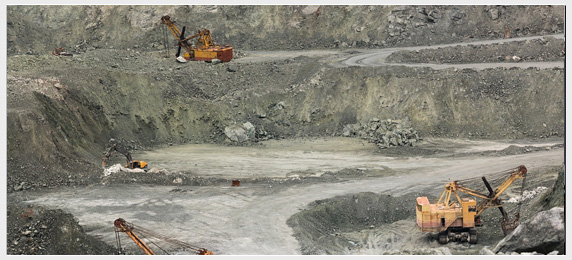
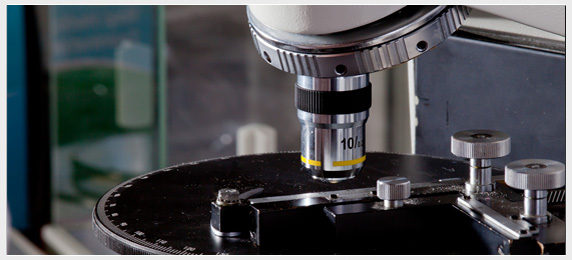

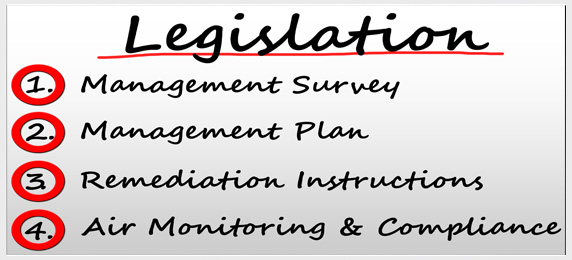
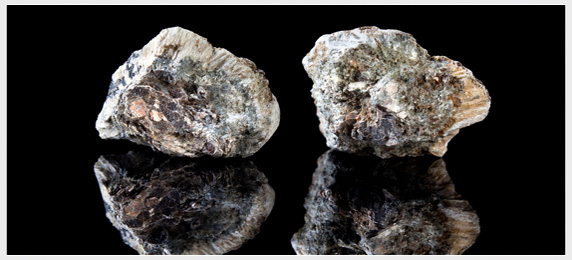
 1
1 2
2 3
3 4
4 5
5


